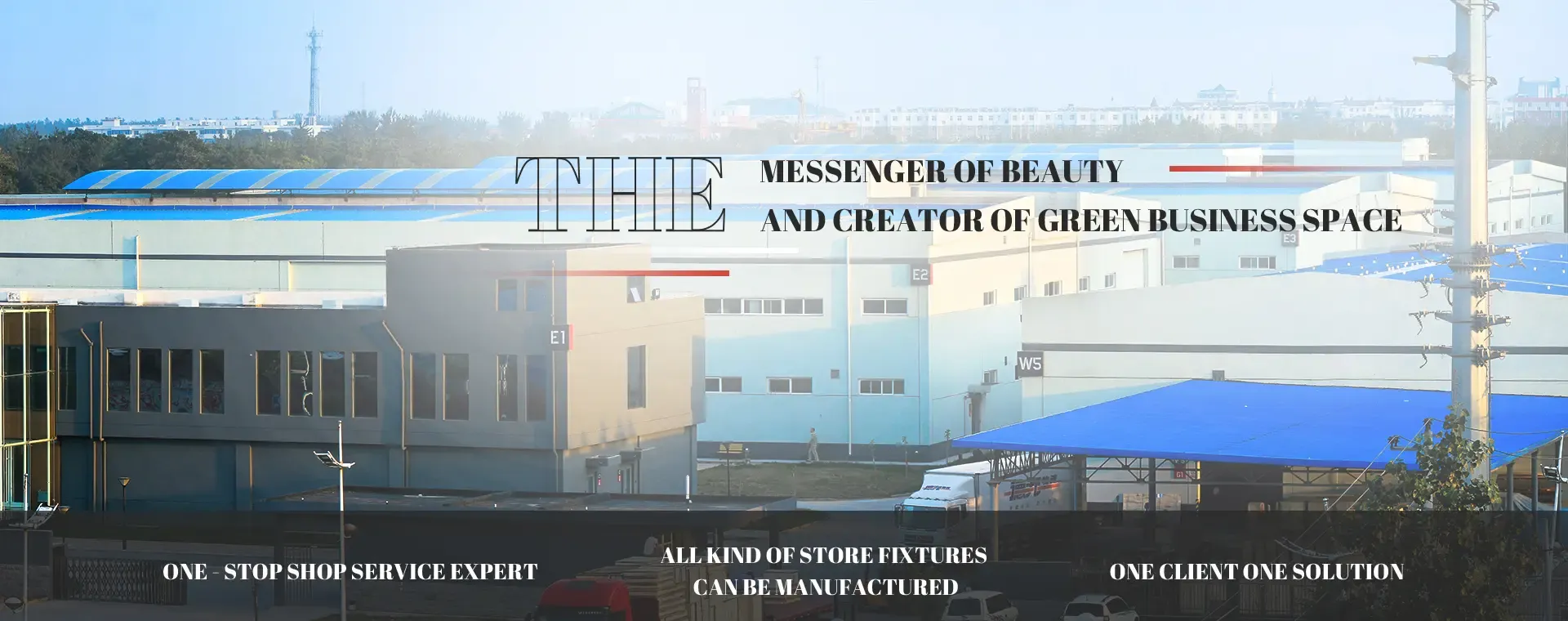Οκτ . 11, 2024 05:17 Back to list
store fixture
Exploring the Importance of Store Fixtures in Retail Design
When it comes to retail design, the significance of store fixtures cannot be overstated. Store fixtures serve as the backbone of any retail environment, influencing not just the aesthetic appeal of the space but also the overall shopping experience. Understanding their role can provide valuable insights for retailers aiming to enhance customer engagement and drive sales.
What are Store Fixtures?
Store fixtures encompass a wide range of items used to display merchandise and facilitate the shopping process. They include shelves, racks, display cases, mannequins, counters, and more. These elements are not merely functional; they also communicate the brand's identity and values, making the selection of appropriate fixtures crucial for any retailer.
The Aesthetic Appeal
The visual appeal of a retail space is often the first impression a customer receives. Store fixtures are vital in creating an inviting atmosphere. A well-designed fixture can attract attention and invite customers to explore products. For example, a boutique may use elegant display cases to showcase luxury items, while a tech store may utilize sleek, modern shelving to emphasize innovation. The choice of materials, colors, and styles should align with the brand's identity, creating a cohesive look that reinforces the overall message of the store.
Enhancing Customer Experience
Store fixtures play a pivotal role in shaping customer experience. Thoughtfully designed fixtures can streamline the shopping process, making it easier for customers to find what they need. For instance, clear signage, strategically placed racks, and accessible displays create a logical flow through the store, reducing frustration and encouraging exploration.
Moreover, fixtures should facilitate interaction with the products. Consider a clothing retailer that uses mannequins to display outfits. Not only does this showcase the merchandise, but it also helps customers visualize how items might look on them, enhancing the likelihood of a purchase. Additionally, interactive fixtures, such as touchscreen displays in electronics stores, allow customers to engage directly with products, further enhancing the shopping experience.
store fixture

Maximizing Space Utilization
Effective use of space is crucial for any retailer, especially in urban environments where real estate is at a premium. Store fixtures can help maximize this space by utilizing vertical storage solutions, such as wall-mounted shelves and tall racks. This allows retailers to display a wider array of products while maintaining a clean and organized appearance.
Beyond merely displaying items, fixtures should also consider the layout of the store. The arrangement of fixtures can guide customer traffic, encouraging them to explore different sections of the store. For example, placing high-demand items at the back of the store requires customers to walk past a variety of other products, increasing the likelihood of impulse purchases.
Flexibility and Adaptability
The retail landscape is constantly shifting, influenced by trends, seasons, and consumer behavior. Store fixtures must be adaptable to accommodate these changes. Retailers can invest in modular fixtures that can be easily reconfigured to highlight new products or seasonal collections. This flexibility ensures that retailers can maintain a fresh and engaging environment without incurring substantial renovation costs.
For instance, a grocery store might change its fixture layout to promote seasonal produce during holidays, utilizing temporary displays that can be quickly installed and removed. This adaptability not only enhances the visual appeal of the store but also keeps the shopping experience dynamic and interesting for returning customers.
Conclusion
In conclusion, store fixtures are more than just practical tools for displaying products; they are fundamental elements of retail design that significantly impact customer experience and sales. From creating visual appeal to enhancing the shopping process and maximizing space, the right fixtures can transform a simple retail environment into an engaging and effective space. Retailers should carefully consider their fixture choices, ensuring they align with their brand identity and meet the evolving needs of consumers. As the retail industry continues to evolve, investing in innovative and adaptable store fixtures will remain a key strategy for success.
-
The Benefits of Electronic Shelf Labels for Modern Stores
NewsJul.01,2025
-
Space-Saving Retail Store Furniture Designs for Small Shops
NewsJul.01,2025
-
Slatwall vs. Gridwall: Which Store Fixture is Right for Your Business?
NewsJul.01,2025
-
Shop Fittings: Essential Elements for a Functional Retail Space
NewsJul.01,2025
-
How to Design a Minimalist Cosmetic Shop Display
NewsJul.01,2025
-
Creative Clothes Shop Display Ideas to Attract More Customers
NewsJul.01,2025


















































































































